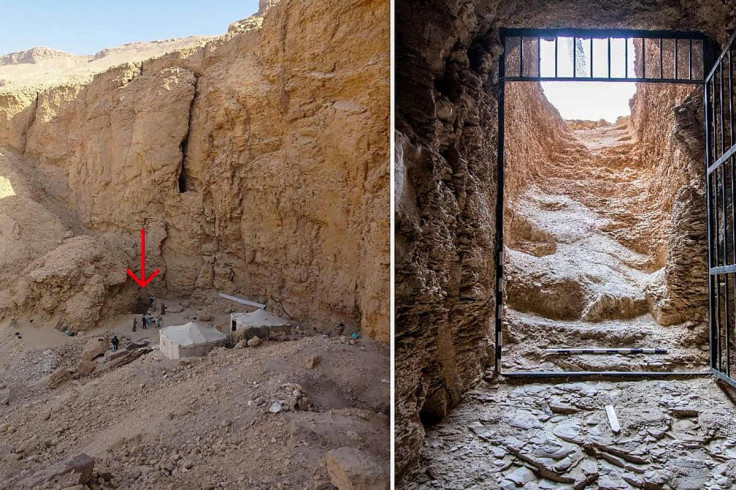'Remarkable' Egyptian Tomb Found A Century After King Tutankhamun: What We Know So Far
The discovery of a new royal tomb offers insights into the 18th dynasty and is expected to boost tourism

Egyptian archaeologists have uncovered the long-lost tomb of King Thutmose II, marking the first discovery of a royal burial site in Egypt in over a century.
On 18th February, Egypt's Ministry of Tourism and Antiquities announced that the tomb, located near Luxor, is the first pharaonic royal tomb to be unearthed since the discovery of Tutankhamun's treasures in 1922.
The Discovery of Thutmose II's Tomb
The burial site was found west of the Valley of the Kings, a historic necropolis where many ancient Egyptian royals and nobles, including Tutankhamun (also known as King Tut), were laid to rest.
Thutmose, who lived nearly 3,500 years ago, was an ancestor of Tutankhamun. His wife, Queen Hatshepsut, one of the few women to rule Egypt, had her mortuary temple on the Nile's west bank at Luxor, close to her husband's newly discovered tomb.
A Glimpse Into The 18th Dynasty
Thutmose reigned as king during ancient Egypt's 18th dynasty, and his tomb was the last remaining undiscovered tomb from that era. Archaeology News reported that an archaeology team located Thutmose's tomb's entrance in October 2022, initially believing it to be the burial site of a queen.
Further excavation revealed inscriptions that identified Thutmose II as the 'deceased king,' along with mentions of Hatshepsut. Although the tomb flooded shortly after Thutmose's burial, damaging much of its contents, some funerary items were recovered.
Discovery of the tomb of Thutmose II (Feb. 2025)
— Egypt Museum (@egyptomuseum) February 19, 2025
This week, archaeologists unveiled a momentous discovery—the long-lost tomb of Thutmose II, believed to be the final undiscovered royal burial site of Egypt’s 18th Dynasty. This marks the first tomb of a pharaoh uncovered since… pic.twitter.com/0W4uOiQMzB
Egypt's antiquities ministry also hailed the discovery as 'one of the most significant archaeological breakthroughs in recent years.'
Professor Mohamed Abdel-Badel, head of Egypt's Antiquities Sector, told Archaeology News that the team 'recovered and restored fallen plaster fragments' bearing blue inscriptions, including passages from the Book of the Amduat, which the website called 'a key funerary text used in royal burials.'
Egypt Gears Up For Projected Tourism Boom
Thutmose's tomb now joins the ranks of ancient Egyptian wonders that attract throngs of tourists to the country. In January, Prime Minister of Egypt Mostafa Madbouly announced that Egypt welcomed 15.7 million tourists last year and, according to Agence France-Presse, hopes to attract 18 million visitors by 2025.
This year, the long-awaited opening of the Grand Egyptian Museum at the foot of the Giza pyramids could help Egypt reach that target. To meet ambitious 2025 tourism goals, the government is expanding Egypt's hotel capacity and improving tourism infrastructure, capitalising on growing global interest in the country's cultural and historical treasures.
The Ongoing Preservation Of Egypt's Past
Madbouly concluded his activities with a visit to the 'Arabesque' project at Magra El-Oyoun in Cairo, underscoring the government's dedication to restoring and preserving Egypt's historical heritage.
During the weekly press conference, the Prime Minister expressed optimism for 2025, hoping it would be a year of prosperity, security, and growth for Egypt, with ongoing efforts to bolster the nation in every sector.
The Prime Minister also highlighted the importance of the digital economy, especially artificial intelligence, as a future source of jobs and economic expansion.
For now the mysteries of ancient Egypt continue to draw visitors from around the globe. This latest discovery promises to further enhance Egypt's allure as a destination rich in history and wonder.
© Copyright IBTimes 2025. All rights reserved.






















